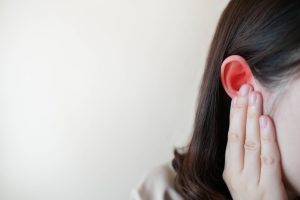Pelvic Inflammatory Disease (PID) is caused by an infection developing in the female’s upper genital tract that is usually caused by a sexually transmitted infection. Diagnosis of the disease is very challenging as it usually presents together with symptoms of other diseases. Serious complications include infertility and ectopic pregnancies. The annual incidence of approximately 1 million women each year in the united states are diagnosed with PID each year.
Read on to find out more about PID!
What is Pelvic Inflammatory Disease?
PID is a broad spectrum of inflammatory disorders that affect the upper female genital tract – uterus, fallopian tubes and ovaries, which can comprise of endometriosis, abscesses found in the ovarian tubes and pelvic peritonitis. A clinical diagnosis is usually made when female patients present with lower abdominal pain and tenderness or soreness in the genital tract.
Aetiology
Patients with the highest risks are menstruating women between the ages of 15 to 25 with multiple sex partners who do not use contraception, in areas with a high rate of sexually transmitted infections.
Causes of pelvic inflammatory disease
PID is usually caused by an infection in the upper female genital tract, with majority of the cases caused by a sexually transmitted infection originating from the vagina that ascends into the upper genital tract.
Infections can be caused by these common organisms:
- Neisseria gonorrhoea, which causes gonorrhoea
- Chlamydia trachomatis , which causes chlamydia
- Anaerobic and mycoplasma bacteria
At least 10% of women who are infected with gonorrhoea or chlamydia will develop PID. Bacteria can also be carried by sperm as they navigate toward the uterus and fallopian tubes.
Infection of the upper female genital tract leads to inflammatory damage where cases of scarring and adhesions are commonly seen in the fallopian tubes, which can result in pelvic pain. Severe scarring also results in the dysfunction of ciliated epithelial cells that help to transport the egg (ovum) towards the uterus, leading to issues with infertility.
Complications of pelvic inflammatory disease
Long-term complications of PID include:
- Chronic pelvic pain
- Ectopic pregnancy –The scar tissue prevents the fertilised egg from making its way through the fallopian tube to implant in the uterus. Instead, the egg implants in the fallopian tube. Ectopic pregnancies can cause massive, life-threatening bleeding and require emergency medical attention.
- Infertility
- Tubo-ovarian abscesses – collections of infected fluid or pus develop in the fallopian tubes and ovaries, requiring antibiotic treatment or drainage. This may be life-threatening if rupture occurs, resulting in sepsis.
Inflammation can affect other organs in the vicinity of the infected portion of the fallopian tubes or uterus, and this can cause:
- Acute peritonitis i.e. inflammation of the membrane that forms the lining of the abdominal cavity (peritoneal lining) and/or
- Fitz-Hugh-Curtis syndrome (acute peri-hepatitis) where the tissues that surround the liver become inflamed
Signs and symptoms
Clinical presentation varies greatly between patients. Most patients notice:
- Abnormal vaginal discharge
- Lower abdominal pain aggravated by motion, exercise or sex that lasts for less than 7 days
- Unexpected bleeding from sex
- Pain in the adnexal area (area of the uterus)
- Cervical motion tenderness
- Abnormal uterine bleeding
Diagnosis of pelvic inflammatory disease
Diagnosis of PID is based on:
- Medical and sexual history – the doctor will ask about your general health, signs and symptoms, sexual habits/activity, and history of STIs
- Pelvic examination – the doctor will examine the reproductive organs to look for signs of infection e.g. abdominal tenderness, vaginal discharge
- Swabs – these are taken from the inside of the vagina and cervix to identify any signs of bacterial infection. At least half of the patients will test positive for chlamydial or gonococcal infections, which supports the diagnosis of PID. A negative test, however, does not rule out PID.
Diagnosis of the disease is very challenging as it usually presents together with symptoms of other diseases. PID may easily be confused with urinary tract infection, endometriosis, appendicitis etc.; diagnostic tests must be carried out to differentiate diseases.
Some tests to exclude alternative causes:
- Urine tests to rule out urinary tract infection, (ectopic) pregnancy, which cause similar pelvic pain.
- Blood tests to rule out HIV and other STIs
- Imaging and more invasive studies are reserved for cases of diagnostic uncertainty, or to identify complications of PID
- Transvaginal ultrasound, where a small probe is passed through the vagina for clearer images of the reproductive system e.g. to detect ovarian cysts, tubo-ovarian abscesses
- Endometrial biopsy – to remove and test a small tissue sample from the lining of the uterus (endometrium) e.g. to detect inflammation in endometritis
- Laparoscopy – 2 small incisions are made in the abdomen and a thin camera is inserted so the doctor can look at your internal organs and, if necessary, take tissue samples. This can detect endometriosis (where endometrial tissue grows outside of the uterus), hydrosalpinx (tubal blockages), appendicitis, peritonitis or peri-hepatitis.
Treatment of pelvic inflammatory disease
Treatment is firstly targeted at treating ongoing infections that could possibly be transmitted to potential sexual partners. There is a low threshold for aggressive treatment where treatment should not be delayed in all cases.
Early diagnosis and treatment are imperative in preserving fertility.
Since PID can be attributable to multiple microbial pathogens, broad spectrum antibiotics are usually prescribed to target as many pathogens as possible. Short duration regimens such as azithromycin can be helpful in up to 70 percent of cases where bacteria only infects the cervix. Infected women who are not treated will run the risk of infection further into the upper genital tract. Studies have shown that untreated women with chlamydia risk.
In cases where surgery is warranted, reproductive organs are conserved as much as possible with less invasive interventions.
Conclusion
PID has serious implications that are not only limited to infertility. Chronic diseases like pelvic pain can impact day to day activities which can cause insomnia or depression when pain become difficult to manage.












